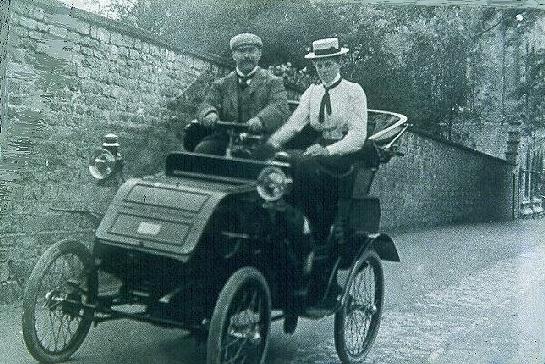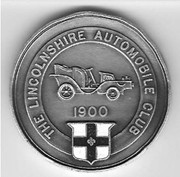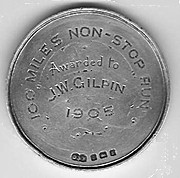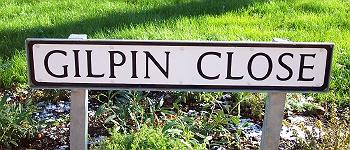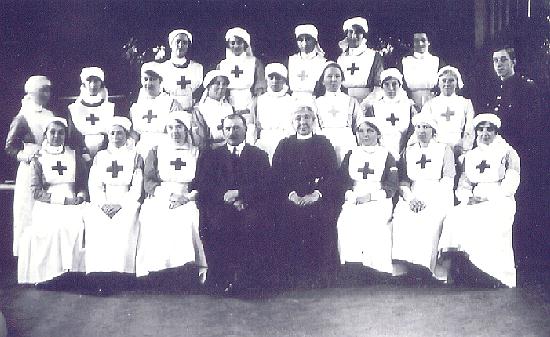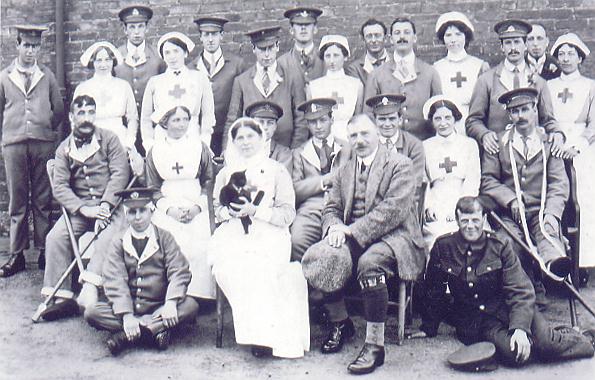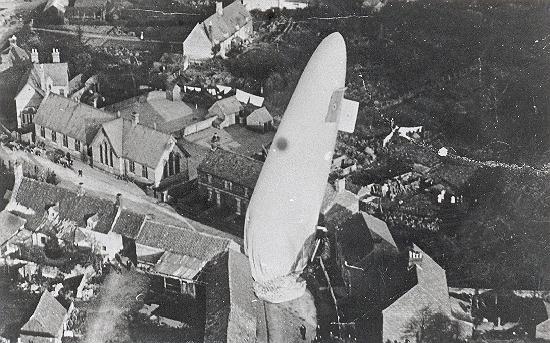|
Dr William John Gilpin MBE 1864-1943
One of Bourne's early motoring pioneers was Dr William John Gilpin, a general practitioner who preferred to be known as John. He was born at Bedford in 1864 but after completing his education and qualifying as a medical practitioner, he moved to the town in the late 19th century to take over the practice at Brook Lodge in South Street. In 1900, he married Ada Maria Bott (née Slater), aged 38, widow of Arthur Bott, owner of the Angel Hotel, who had died in 1899, thus becoming step-father to their son Henry Malcolm Bott who had been born on 1st December 1898. Life was a comfortable one at Brook Lodge with servants to look after them, a cook and a handyman, and a domestic nurse or nanny to care for the child. The doctor soon became a familiar figure out on his rounds in a pony and trap until he purchased a car, becoming one of the first people in the town to own one, and was often seen driving around at the wheel of his Peugeot, later a French Gregoire, sometimes with his wife or another companion in the front passenger seat, and occasionally the family nanny, Jessie Moore, a local girl in her early twenties. He earned himself a reputation as a flamboyant character, plain speaking but kindly, a man who enjoyed the pleasures of life, particularly his pipe which he was known to smoke during surgery hours. He also liked shooting, fishing and walking and could often be seen strolling around town with his two pet spaniels while his wife was renowned for serving a delicious walnut fruit cake whenever anyone came to tea. Motoring was his great passion and he joined the Lincolnshire Automobile Club, an organisation that had been formed in 1900 and had 91 members within two years and by 1914 the figure had risen to 322, one in every six of them being a doctor, professional men who could afford such a luxury. In 1904, he read a paper on the economics of motoring to the club, giving some facts concerning car ownership based on his own experience. He estimated that if £25 a year were spent on tyres, 6,000 miles of motoring would be possible in that period. Allowing for 15 shillings (75p) as a weekly wage for a man to look after the car and also to do the work in the garden and various other odd jobs, then reckoning the further expense of petrol, clothes, accumulators, licences and repairs, he estimated the cost of his motoring worked out at 3½ pence a mile [92p by today's values]. This contrasted very favourably with horse transport for in earlier days, when the doctor had relied on that, it had cost him sixpence a mile. He had paid £200 for the vehicle itself and in his opinion, each year would see more uniformity in the types of cars while depreciation would be limited to the wear and tear of tyres. He was right about the proliferation of the different car models although motoring expenses overall appear to be much higher today.
Dr Gilpin became an active member and competitor, winning a silver medal in 1905 for driving in a 100-mile non-stop run through the county in his Peugeot car. His close friend, Thomas William Mays, father of Raymond who was to achieve fame as an international racing driver and designer, was also a member and competitor and the two of them were successful in the club's speed trials held at Grimsthorpe Park in March 1910 when Mr Mays won the Newsum Challenge Cup for the third time and therefore the trophy became his property. He was driving a De Dion and Dr Gilpin took second place with his new Gregoire car. This vehicle became his prized possession and anyone who damaged it did so at their peril and on one occasion, he sued a local farmer after one of his milk floats had run into it. The case was heard before His Honour Judge Dobb at the county court in Bourne on Friday 11th August 1922 when the doctor claimed £6 4s. 0d., being the cost of repairing the damage. The court was told that Dr Gilpin had been attending a patient at Dyke on 3rd December 1921 and had left the vehicle by the side of the footpath facing Bourne. A milk float owned by Mr Brocton Wadsley of Dunsby, and driven by his foreman, came past and the wheel caught the front and rear mudguards and the hood of the car, causing extensive damage. Mr H Kelham, defending, said that the pony had swerved and that the affair was a pure accident, without any negligence on the part of the driver. The judge found for Dr Gilpin and also awarded costs, saying that as the car was stationary, it behove the driver of the float to take due precautions to avoid it. During the Great War of 1914-18, Dr Gilpin was appointed commandant of the military hospital run by the Red Cross which was established at the Vestry Hall in North Street from November 1914 until December 1918 during which time 945 wounded soldiers from the front line were cared for and in June 1918 he was awarded the MBE for his services in conducting the unit in such an efficient manner. There were fears for his health in 1917 when he contracted blood poisoning while carrying out a post mortem examination and although he was seriously ill for a time, he recovered and was back at work within weeks. Dr Gilpin remained in Bourne until retiring in 1929 when he went to live at 61, Sunningdale Drive, Skegness, but returned to medical duties for a time at the outbreak of the Second World War in 1939 because of the country-wide shortage of doctors. There was speculation that he needed the money, having lost a large part of his income through bad investments, but this is unlikely because he died a wealthy man in 1943, aged 79, leaving almost £10,000 in his will, which would be worth £300,000 by today's values.
See also The Hill Climbing Trials of 1903 Gilpin medal surfaces at sale
Go to: Main Index Villages Index |
